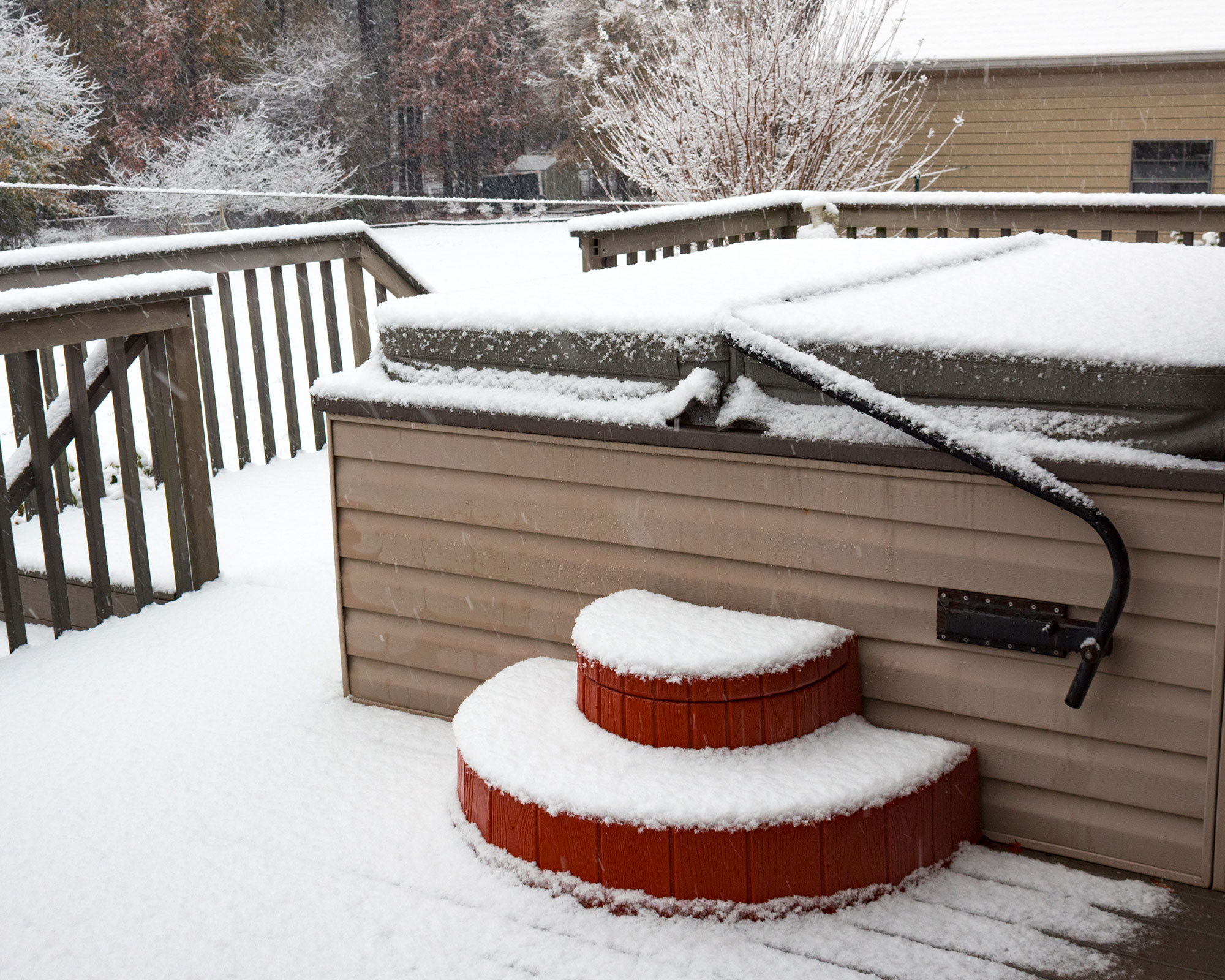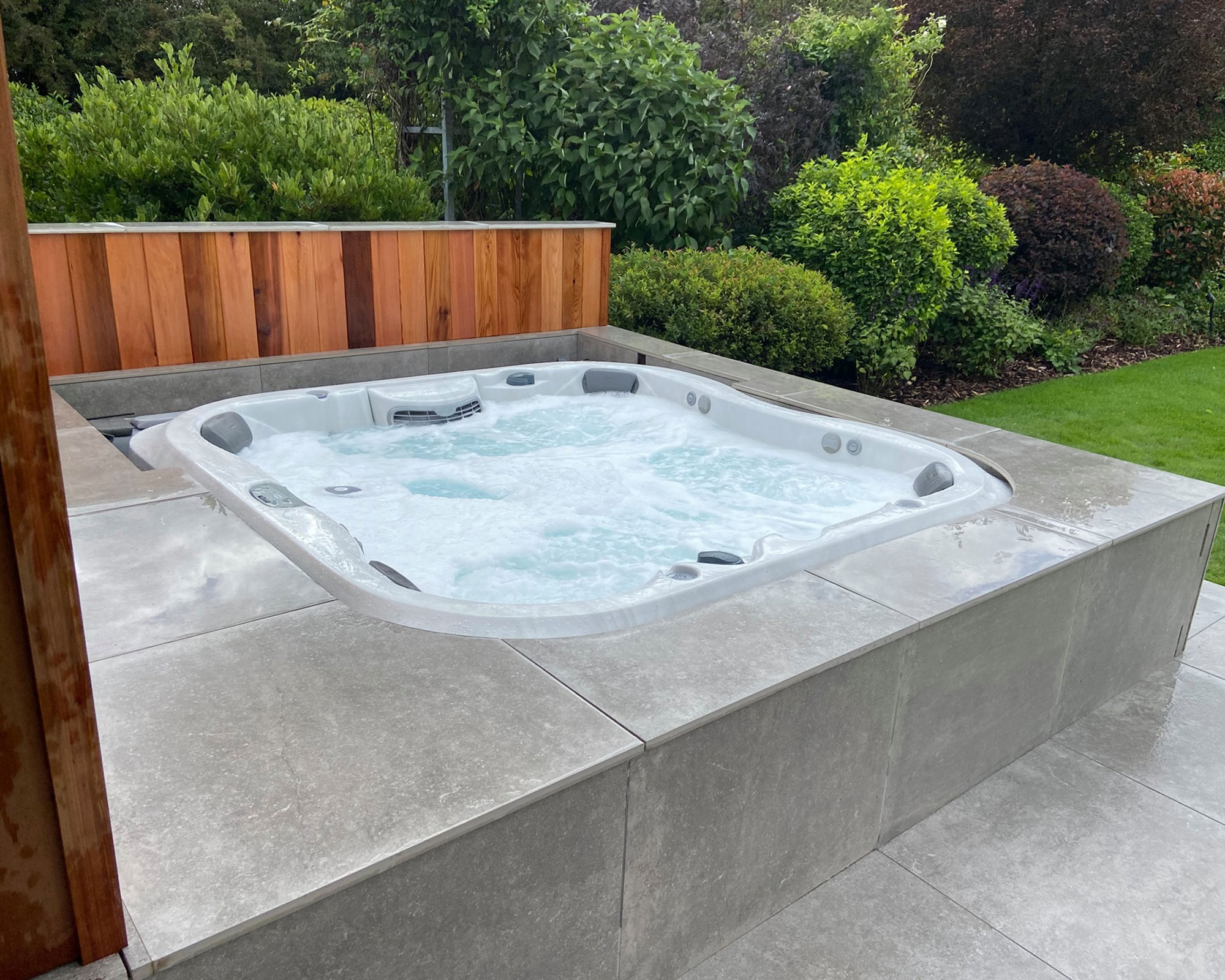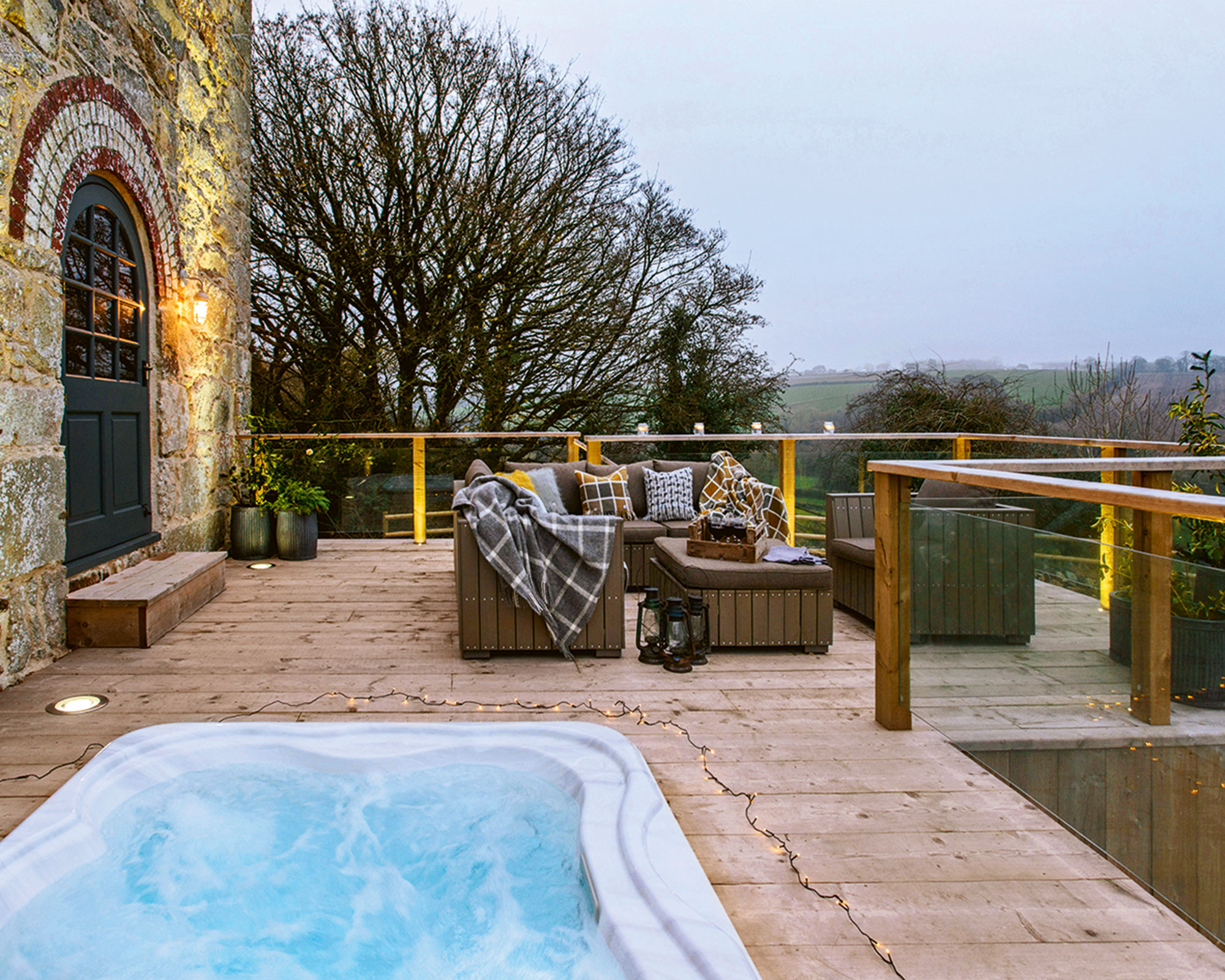Hot tub winter care: get in the know about winter maintenance
Wondering about hot tub winter care? This is what the experts advise you should do to look after your outdoor spa in cold weather


If you want to enjoy your spa year round, knowing about hot tub winter care is critical. Bathing in warm water while there’s snow on the ground can be the ultimate luxury, but you’ll need to get savvy about use and maintenance when it’s cold.
And even if you don’t intend to take a dip again until the weather’s warmer, it’s crucial to follow the right steps to prevent damage to your hot tub over the winter months so it’s ready to be used once spring and summer come around.
Here we’ve asked the experts to share their advice on how to look after the best hot tubs so you can use your spa in winter if you want, and maintain it all season long.
Get savvy about hot tub winter care
Our favorite hot tub ideas are designed to be enjoyed all year round, but there are some additional tasks you’ll need to bear in mind if you plan on enjoying your outdoor spa through winter. There are also jobs you should do if you’re not going to use yours in the colder months. We’ve got the lowdown on both scenarios.

What to do if you plan to use your hot tub in winter
Depending on the model you chose, hot tub winter preparation can be minimal as some come with freeze protection activated at low temperature. However, you might need to take action to ready it for winter, advises Todd Carson, merchant at The Home Depot.
‘Turn your hot tub to “no freeze mode” once the temperature drops to ensure it stays warm all day long while also preventing any parts from potential damage,’ says Todd.
How warm should the water be in winter? ‘We would advise turning your hot tub temperature up to between 98.6 and 102.2ºF (37 and 39ºC) (this may vary from person to person),’ says Tim Snelling from Hot Tub Hub.
Beware of the potential for cover damage after snowfall. ‘If a hot tub lid is covered in snow, sweep the snow off with a soft brush before moving the cover,’ says Sallie Leslie-Golding from BISHTA (The British and Irish Spa and Hot Tub Association). ‘Snow is heavy, and trying to lift the lid may potentially cause damage to the cover (and potentially the person trying to lift it). Secondly, you don’t want freezing snow dropping off the cover and into the hot tub water. A cover lifter is recommended to assist with lifting and replacement of the cover.’

Be safety conscious, too. ‘Always remove the cover completely when using the hot tub – even in cold weather,’ Sallie continues. ‘The gap between the water surface and the underside of the cover is very small, and suffocation could occur quickly, so never be tempted to use the hot tub with the cover in place.’
There are other precautions worth taking. ‘Ensure pathways between the hot tub and the house are cleared of snow and frost to minimize the risk of slipping over,’ she says. ‘Use a proprietary path removing salt/grit combination if necessary.’
Think shoes, too. ‘Always wear suitable footwear to protect your feet from the cold and minimize the chance of contamination being transferred from feet to the hot tub water,’ says Sallie.
Get organized so you will stay warm as well. Adding some cozy patio ideas next to your hot tub is definitely a bonus. ‘Ensure you have all the necessary items in your vicinity, such as a fluffy robe and slippers to jump in and out of before and after your dip,’ says Tim. ‘We’d recommend a couple of hooks to hang your items on to keep them off the ground.’

What to do if you won’t be using your hot tub in winter
If you won’t be using it, hot tub winter care is a little more involved, but it’s essential. ‘Properly winterizing your hot tub will help prevent it from damage such as frozen pipes,’ says Todd Carson. ‘It is best to drain and clean a hot tub if you do not plan to use it in the winter.’
To winterize your hot tub, follow these steps from Sallie Leslie-Golding:
- Turn off all air control valves and open all jets. If the hot tub is a couple of years old or more, it would be a good idea at this point to use a proprietary pipe cleaner and biofilm eliminator immediately before draining the hot tub. Drain the water from the hot tub using the hot tub’s built-in drain valve or a submersible pump (which will empty it out much faster). There will normally be a few inches of water left in the bottom of the hot tub, which can be bailed out using a plastic bucket or similar plastic container. Switch off power to the hot tub both at the local isolator switch (if fitted) and the MCB (miniature circuit breaker) in the consumer unit.
- Take off the cabinet panel at the front of the hot tub’s equipment bay. Undo the unions connecting the pipework to the pumps and allow the water in the pipework to drain away. Use a wet and dry vacuum cleaner to clear the pipework of any remaining water. If the hot tub is fitted with an air blower, disconnect the end of the pipe from the blower, and suck as much water as possible from the blower lines with the wet and dry vacuum. Remove the drain plugs from the pumps and let the water drain from the pump bodies. When all the water has drained from the pump bodies, replace the drain plugs.
- Replace the cabinet panel. Wipe the hot tub’s interior and exterior with a clean cotton towel. After completely drying out, place the cover back on the hot tub, close it and secure it.
- As the hot tub will not be used for a while, it is better to cover it up adequately to ensure it does not attract dirt and insects and protects the exterior from the elements. Cover the hot tub with a tarpaulin or large plastic sheet and tie it down securely so it remains in place.

Bear in mind that if you don’t want to undertake these tasks yourself, a reputable supplier or pro can winterize your hot tub for you. Take note of this caution from Sallie, too: ‘If your hot tub is still within its warranty period before you begin any hot tub maintenance yourself, check your manufacturer’s terms and conditions as, sometimes, the manufacturer may only provide warranty coverage if it has been winterized by an authorized service professional.’
Hot tub winter care mistakes – and how to avoid them
If the latest hot tub deals have inspired you to invest in an outdoor spa, make sure you keep an eye on your new hot tub throughout the cold season. ‘Monitor your water levels in the winter months. Pumps can malfunction and cause the water to freeze if it gets too low,’ says Todd Carson.
If the tub does break down? ‘Get it fixed as soon as possible,’ says Sallie Leslie-Golding. ‘As long as a hot tub is working correctly, heated water is circulating, and filtering and built-in freeze protections are operating, modern hot tubs can deal with the absolute worse that the winter can throw at them. However, a breakdown could potentially lead to circulation and heating stopping and the risk of freezing conditions affecting pipework and equipment, leading to damage being caused.’
Don’t neglect the usual maintenance requirements of your tub either, so make sure it's on your list of winter jobs in the garden. ‘Keep up a good water care maintenance regime,’ says Sallie. ‘Just because it is winter, it does not mean you can step back from a good water care program.’

Choosing thermal covers for a hot tub
Thermal covers for hot tubs are a sound investment. ‘A hot tub cover helps to minimize heat loss and save energy between uses,’ says Todd.
Don’t take the cover off until the last minute when you’re using the tub, though. ‘Only remove the cover immediately before getting into the hot tub, and replace it again immediately after getting out,’ says Sallie Leslie-Golding. ‘This is good practice to minimize heat losses and, therefore, running costs at any time of year. However, it is imperative when the weather is cold, as the difference between water temperature and air temperature is much more significant than in the summer.’

Sarah is a freelance journalist and editor writing for websites, national newspapers, and magazines. She’s spent most of her journalistic career specialising in homes and gardens and loves investigating the benefits, costs and practicalities of home improvement. It's no big surprise that she likes to put what she writes about into practice, and is a serial house revamper.
